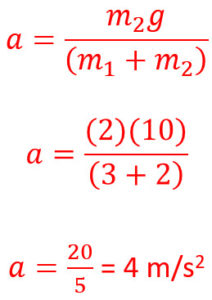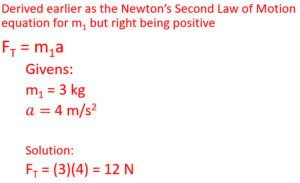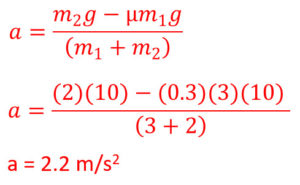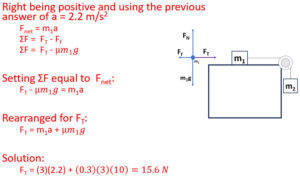Modified Atwood Machines
Modified Atwood Machine Physics: solve problems, gain insights, and sharpen skills through examples and practice problems.
A modified Atwood machine, similar to an Atwood Machine, has a central pulley and hanging masses. Modified because one or more the masses are not hanging and may be on a flat surface or incline.
The pulley changes the direction of the force, and we can use free body diagrams and net force equations to determine a force, net force, and resulting accelerations.

Equal Tension in the Atwood Machine String
The magnitude of rope tension attached to each mass is equal.
Notice in the animation, each block has the same magnitude of acceleration and travel attached to a sting that is moving with the blocks.
Most problems assume a massless rope and pulley and ideal conditions.
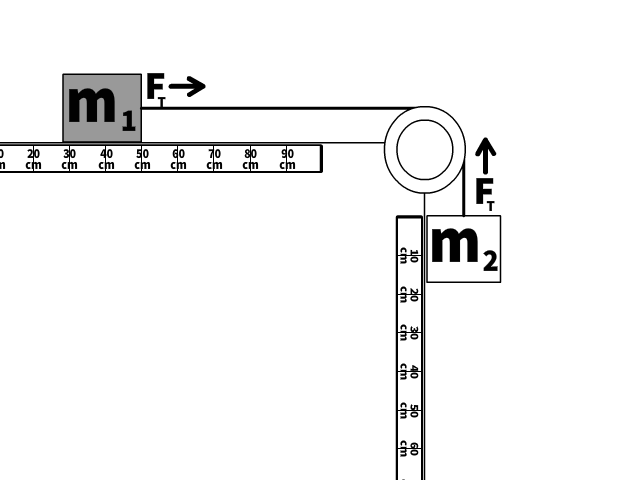
We will look at this scenario two ways:
First, as each block being individual systems
- This is necessary to determine the tension in the string
- You can use this to solve for acceleration of either block
Secondly, as the two blocks and the massless rope being a system accelerating together
- This can be used to quickly solve for the magnitude of acceleration of the system
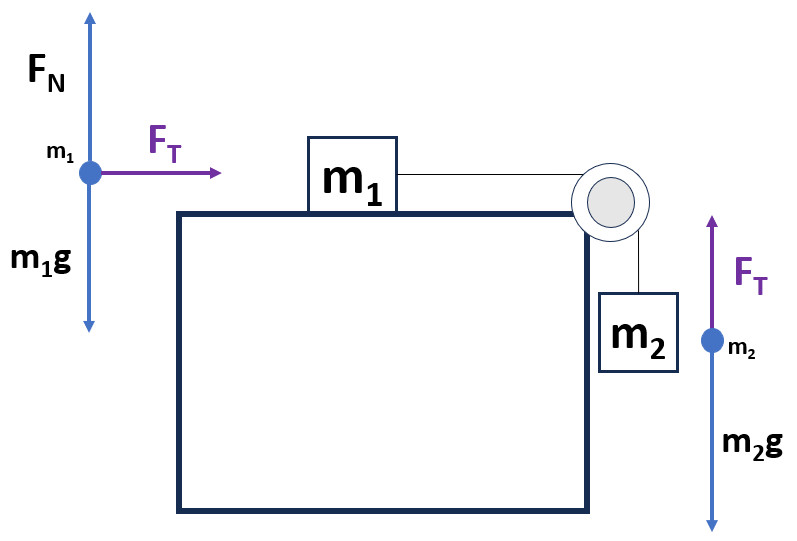
Atwood machine (Blocks Separate Systems)
Block 1 Fnet = ma Equation:
- Weight (m1g) and normal force (FN) are in equilibrium and cancel out.
- On a frictionless surface the net force on m1 would be equal to tension in the string.
- Acceleration of m1 is in the direction of the net force or right here.
Start with Newton's Second Law for mass one.
Fnet = m1a
The sum of force is equal to tension in the rope (right negative).
Fnet = ΣF = -FT
Substitution makes this the Newton's Second Law equation for m1:
-FT = m1a
We can rearrange the m1 equation for tension.
FT = -m1a
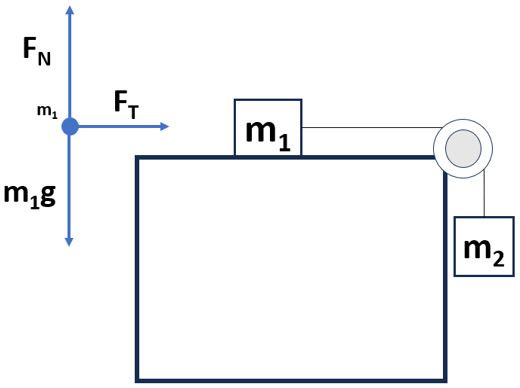
Block 2 Fnet = ma Equation:
- Sum of forces on m2: Weight (m2g) will pull mass two down while tension (FT) will pull up.
- Sum of forces is substituted in for net force creating the m2 Newton's Second Law equation
Up being positive:
ΣF = FT – m2g
Fnet = m2a
Set the net force equation equal to the sum of the forces and substitute.
ΣF = Fnet
FT – m2g = m2a
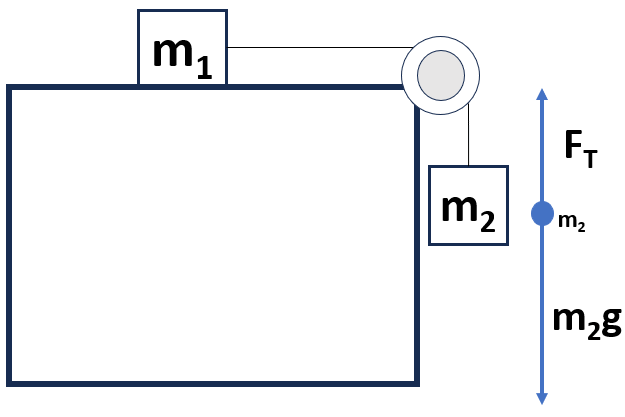
Combining m1 and m2 equations to solve for acceleration:
m1 equation:
FT = -m1a
m2 equation:
FT – m2g = m2a
Combined after substitution:
-m1a – m2g = m2a
Rearrange for a’s on the same side:
-m2g = m1a + m2a
Factor out common factor a:
-m2g = a(m1 + m2)
Isolate a and place on the left of the equation:

The acceleration of m1 will be to the right and m2 would be down.
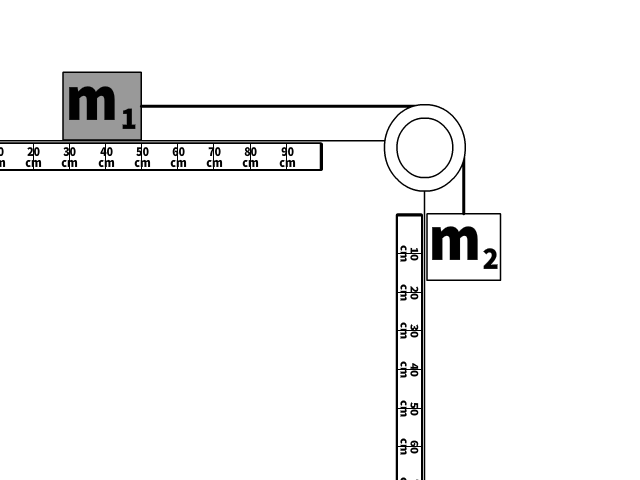

If solving for tension without numerical values
- Take acceleration and substitute into the m1 net force equation.
FT = -m1a



Becomes:


Atwood machine (Blocks with String Combined as a System)
No Friction
Acceleration with no friction starting from the rearranged Newton's Second Law equation



Look at the picture of the scenario.
- Tension is internal to the system of m1 and m2 moving together.
- The only force without friction not in equilibrium or internal to the system is the weight of the hanging second mass (m2g)
- m1 and m2 accelerate together so m must be replaced by (m1 + m2)
The new equation for the acceleration of the system of two blocks:


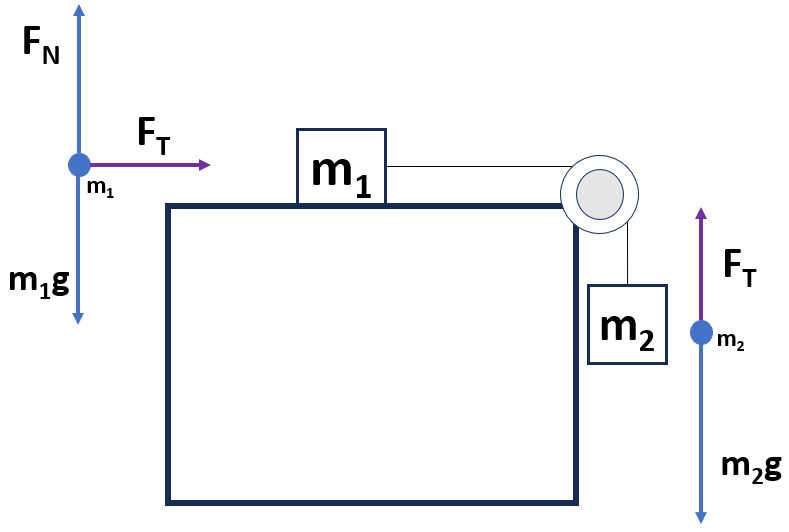

Modified Atwood Example Problem Without Friction:
A) What is the acceleration of 3 kg m1 if m2 is 2 kg?
B) What is the tension in the rope between 3 kg m1 if m2 is 2 kg?
With Friction
Acceleration with no friction starting from the rearranged Newton's Second Law equation



Look at the picture of the scenario.
- Tension is still internal to the system of m1 and m2 moving together.
- Now we have the weight of the hanging second mass (m2g) causing the system to move relative to m1 rightward and friction will oppose that motion leftward
- m1 and m2 accelerate together so m must be replaced by (m1 + m2)
The new equation for the acceleration of the system of two blocks with friction and right being positive:


- When the force of friction is substituted since Ff = μFN1
- The normal force going into friction would be coming from m1's sliding friction


- This can be expanded for normal force if on a horizontal surface to become:


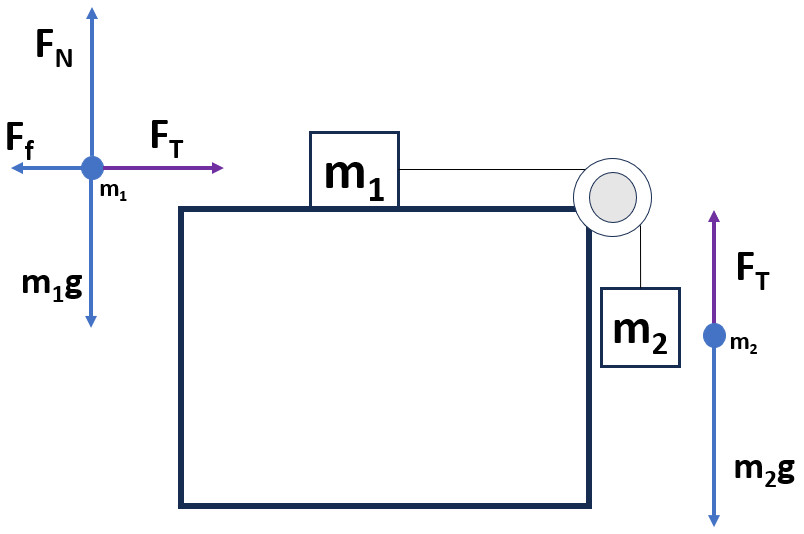

Modified Atwood Example Problem With Friction:
A) What is the acceleration of 3 kg m1 if m2 is 2 kg if the coefficient of friction between block m1 and the surface below is 0.3? (Using 10 m/s2 as g)
B) What is the tension in the rope between 3 kg m1 and 2 kg m2 if the coefficient of friction between block m1 and the surface below is 0.3? (Using 10 m/s2 as g)
Links
- Forward:
- Back to Atwood Machines with Two Handing Masses
- Back to the Main Forces Page
- Back to the Stickman Physics Home Page

